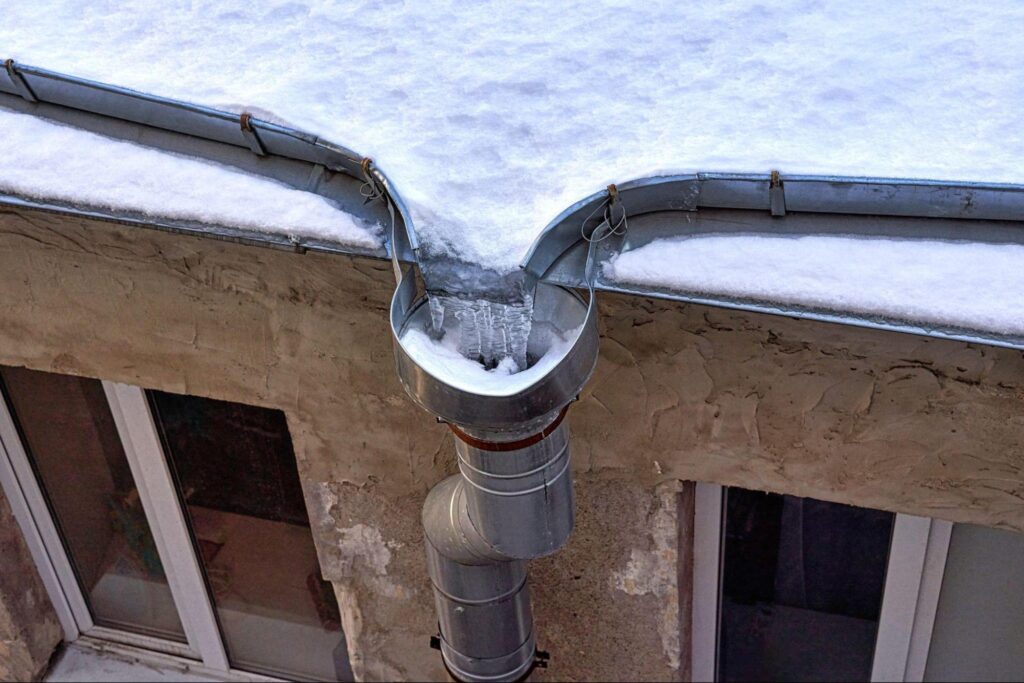
Preparing your roof plumbing for winter is crucial for maintaining the integrity of your home. Neglecting winter maintenance can lead to several issues, such as leaks, water damage, and increased energy costs. Proper winter roof plumbing care ensures the longevity of your roofing system and can save you both time and money in the long run. In this guide, readers will learn essential steps to prepare and maintain their roof plumbing throughout the winter season.
Inspecting Your Roof Before Winter
Before the cold weather sets in, it’s vital to inspect your roof for any potential problems. Winter can exacerbate existing issues, leading to costly repairs down the line. Common roof plumbing problems that arise in winter include leaks, cracks, and damage to roofing materials. When inspecting your roof, look for any signs of wear and tear such as discoloured spots, missing shingles, or any visible cracks.
Gutters and downspouts play a significant role in keeping your roof in good shape. They direct water away from your home, reducing the risk of leaks and water damage. Ensuring they are in optimal condition before winter begins is paramount. To conduct a thorough inspection, you’ll need some essential tools like a ladder, a flashlight, a pair of gloves, and possibly a binocular for closer inspection of distant areas.
Cleaning Gutters and Downspouts
One of the most critical tasks in winter roof plumbing maintenance is cleaning your gutters and downspouts. Over time, gutters can become clogged with debris such as leaves, twigs, and dirt. When these blockages are not cleared, water can overflow and form ice dams, causing significant damage to your roof and home. Ice dams can prevent water from draining off the roof, leading to leaks and potential structural damage.

When cleaning your gutters and downspouts, remove all visible debris. Additionally, check for any signs of rust, corrosion, or damage that might impede water flow. Use a trowel or gutter scoop to remove the debris, and a garden hose to flush out any remaining dirt. Safety is paramount during this task, so make sure to use a stable ladder and have someone nearby in case you need assistance. Regular maintenance throughout winter ensures that your gutters and downspouts function correctly, preventing any surprise build-ups.
Insulating and Sealing Your Roof Plumbing
Proper insulation and sealing of your roof plumbing are essential steps in preparing for winter. One of the primary benefits of insulation is preventing pipes from freezing. When temperatures drop, uninsulated pipes are at risk of freezing and bursting, leading to costly repairs. To begin, identify the pipes and joints that need extra insulation. These are typically the areas most exposed to the cold weather, such as in the attic or along exterior walls.
Applying sealant to roof joints and pipes helps in keeping water and moisture out, maintaining the structural integrity of your roofing system. Select a high-quality sealant suitable for your specific roofing material, whether it’s metal, asphalt, or tile. To effectively insulate and seal your roof plumbing, follow expert tips such as using foam pipe insulation for pipes, and weatherproof caulk or sealant for joints. These measures ensure that your roof plumbing remains secure and efficient throughout the cold months.
Preventing Ice Dams and Snow Build-up
Ice dams are barriers of ice that form at the edge of your roof, which can cause a host of problems. They occur when snow melts at a higher point on the roof and refreezes at a lower point. The build-up of ice can prevent water from properly draining, leading to potential leaks and water damage.
Preventing ice dams requires a multi-faceted approach. Installing heat cables along the edges of your roof is an effective strategy to prevent ice formation. These cables use electric heating elements to melt ice before it has a chance to accumulate. Additionally, making sure your attic is adequately insulated can help regulate temperature and prevent the conditions that cause ice dams.
When it comes to snow build-up, regular removal after heavy snowfalls is crucial. Use a roof rake or a similar tool to safely remove snow from your roof, starting at the edges and working your way up. This not only prevents ice dams but also reduces the weight burden on your roof, which can cause structural issues if left unchecked.
Emergency Repairs and What to Watch For
Despite best efforts, winter roof plumbing emergencies can still occur. It’s important to know what to do and what to watch for in such situations. Common emergencies include leaks, pipe bursts, and roof warning signs such as sagging or water stains on your ceiling. Swift action can mitigate damage and prevent more severe issues.
If you discover a leak or burst pipe, the first step is to turn off the water supply to prevent further damage. Next, use a temporary patch or sealant to contain the leak until professional help can arrive. Keep an eye out for warning signs of roof plumbing issues, such as unusual sounds, consistent dripping, or sudden heating inefficiencies.
In some cases, attempting repairs yourself can worsen the problem, so it’s best to know when to call a professional plumber. They are equipped with specialised tools and knowledge to handle complex roof plumbing issues safely and effectively.
Conclusion
Maintaining your roof plumbing during winter involves several critical steps, from inspecting and cleaning to insulating and preventing ice dams. The benefits of proactive maintenance include a longer-lasting roof, fewer emergency repairs, and overall peace of mind. Establishing a regular winter maintenance schedule ensures that your roof plumbing continues to function efficiently, safeguarding your home against the challenges of the cold season. By following the guidelines outlined in this guide, homeowners can enjoy a worry-free winter with a well-maintained roofing system.




